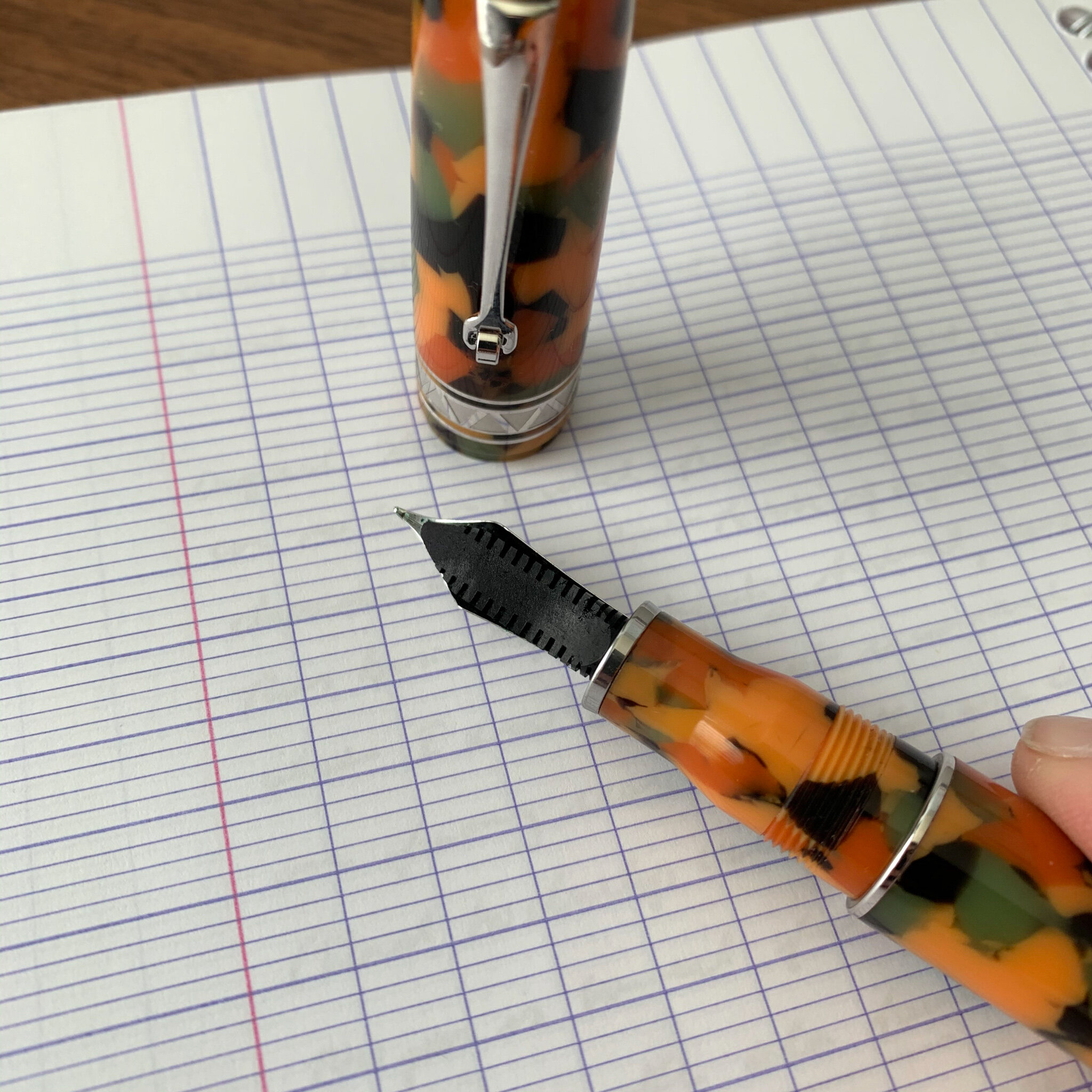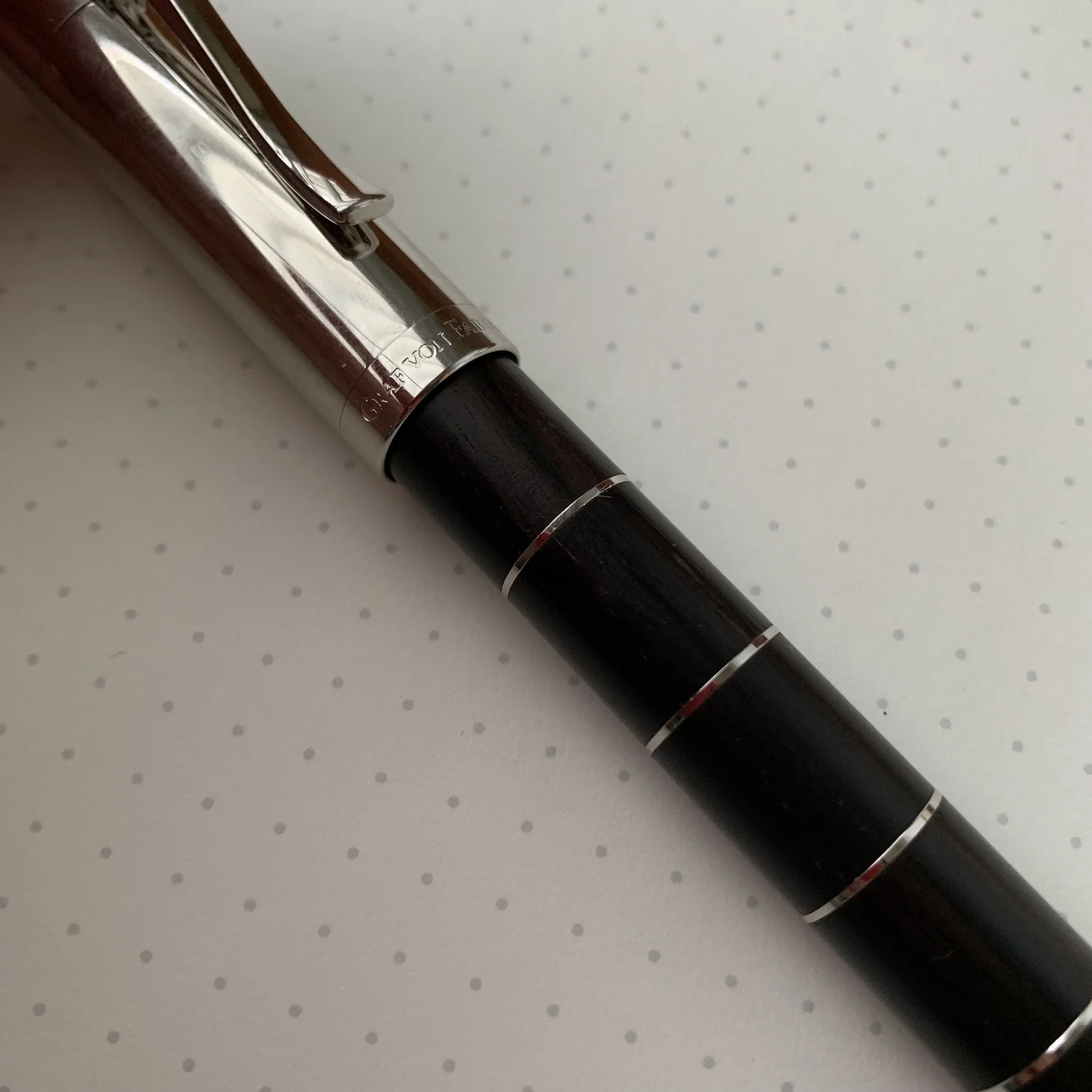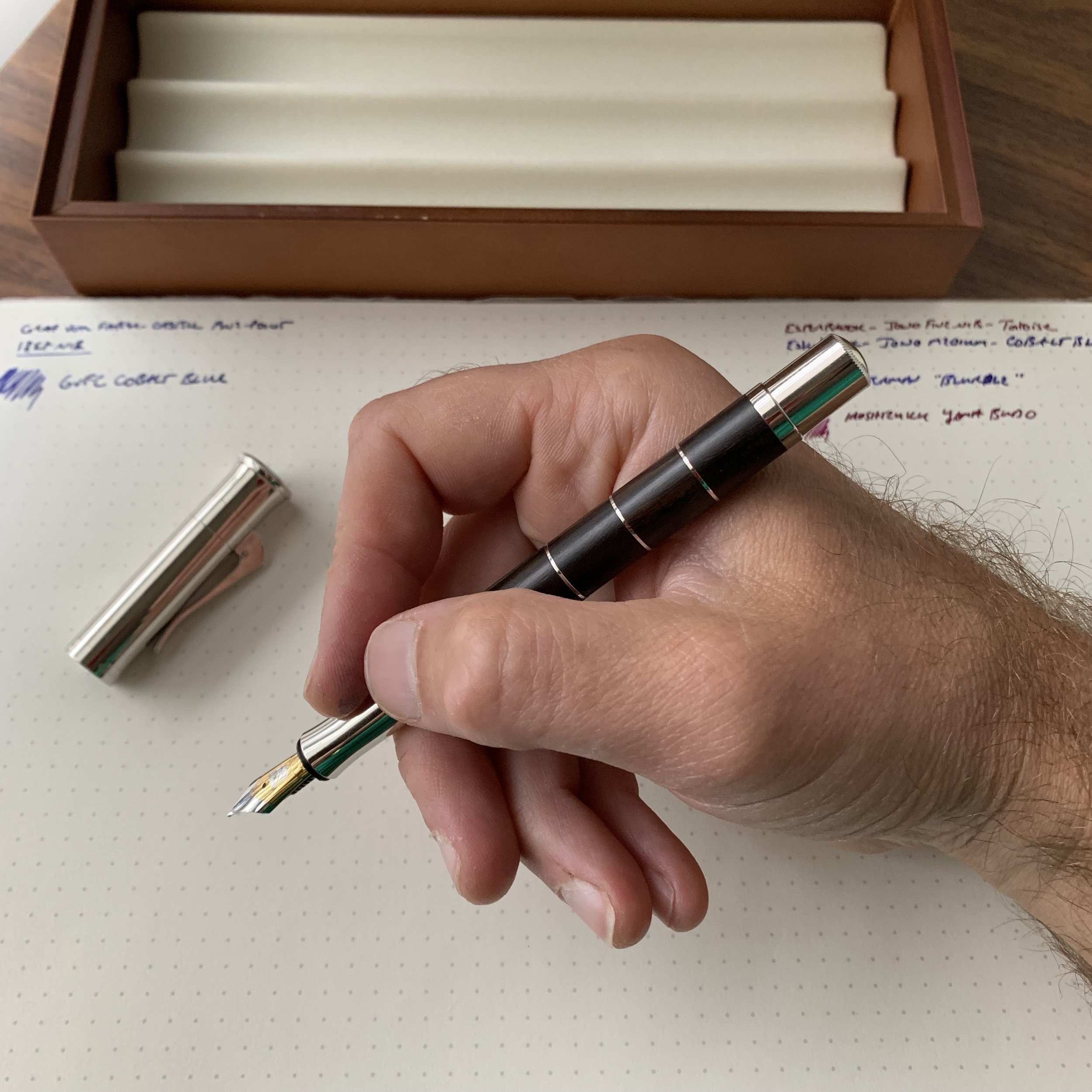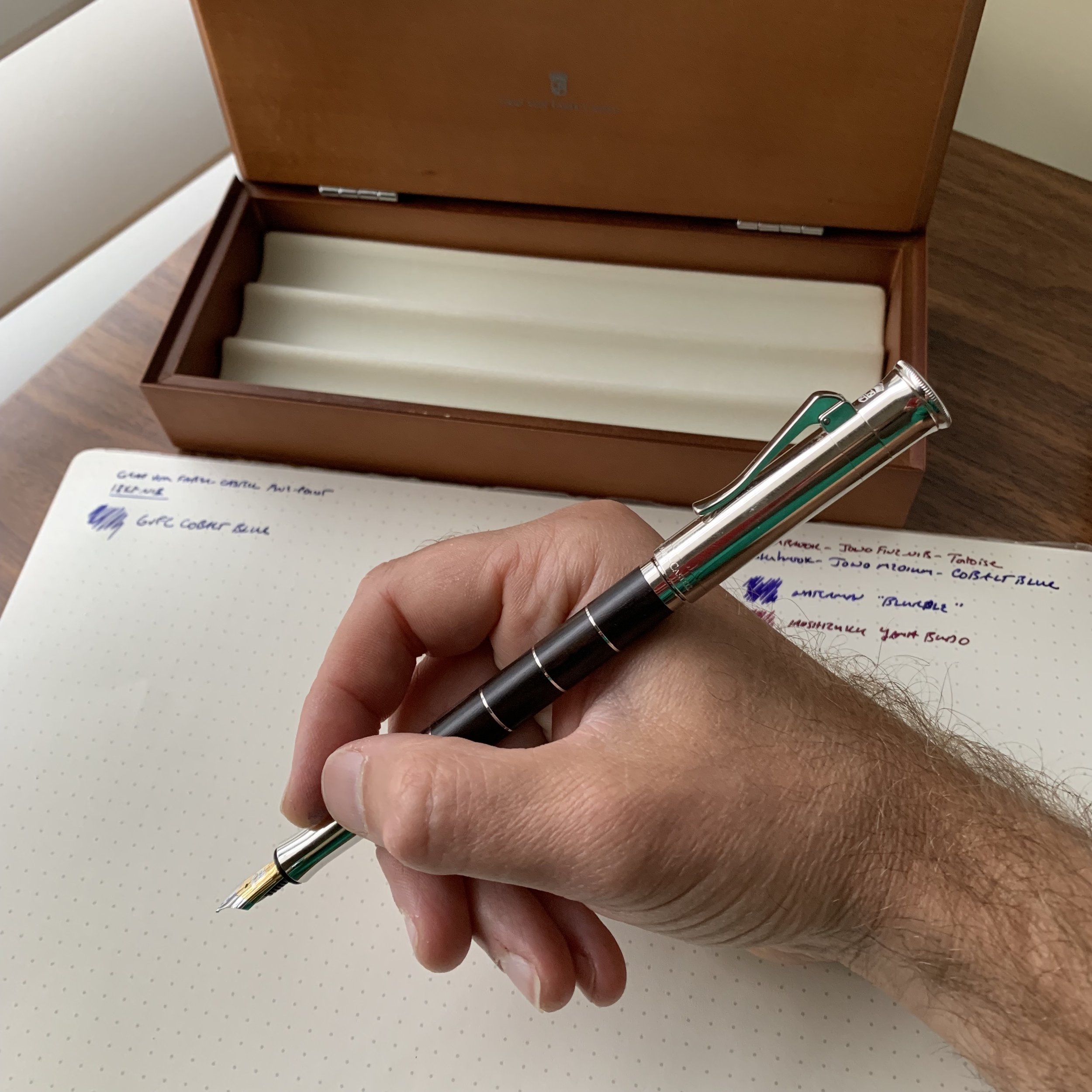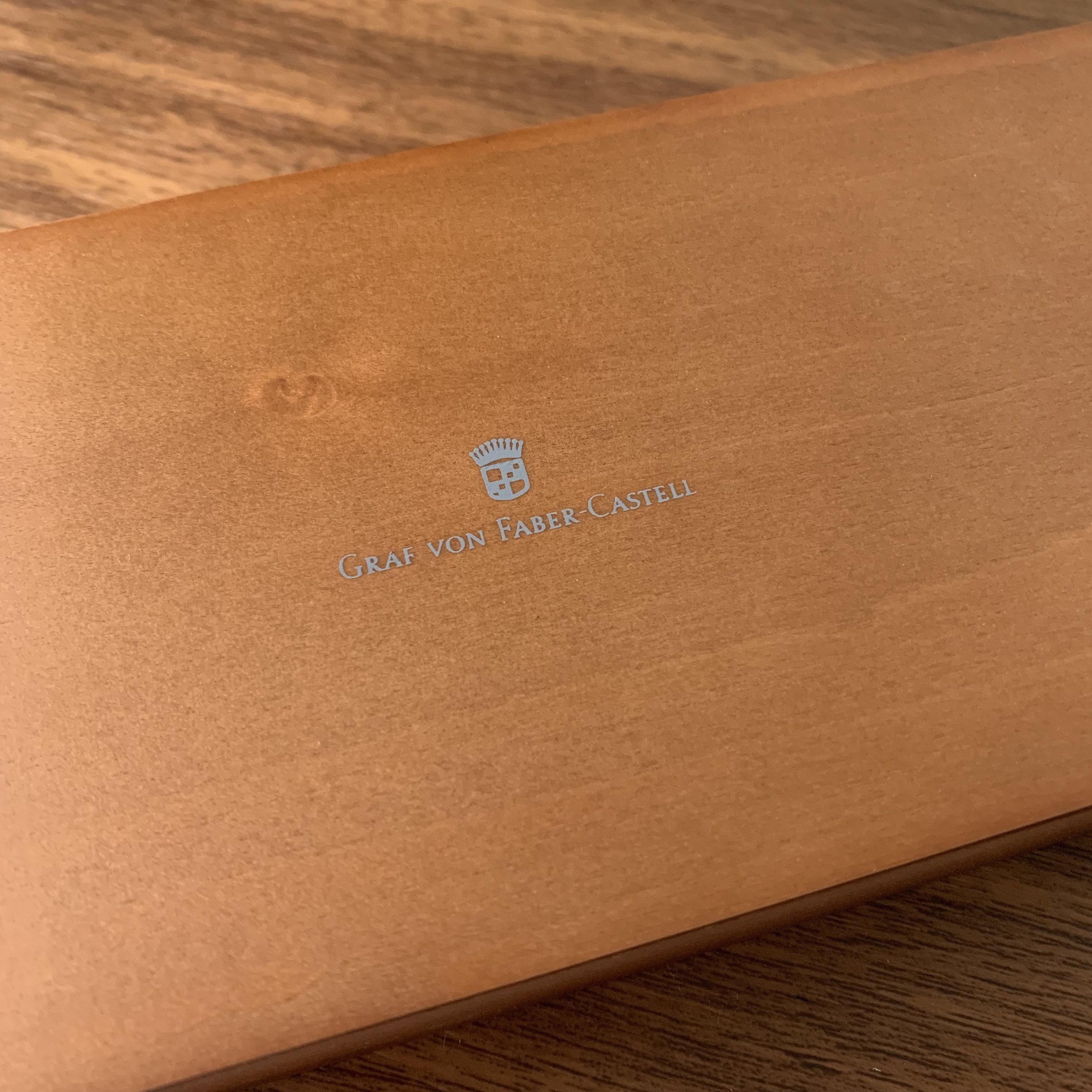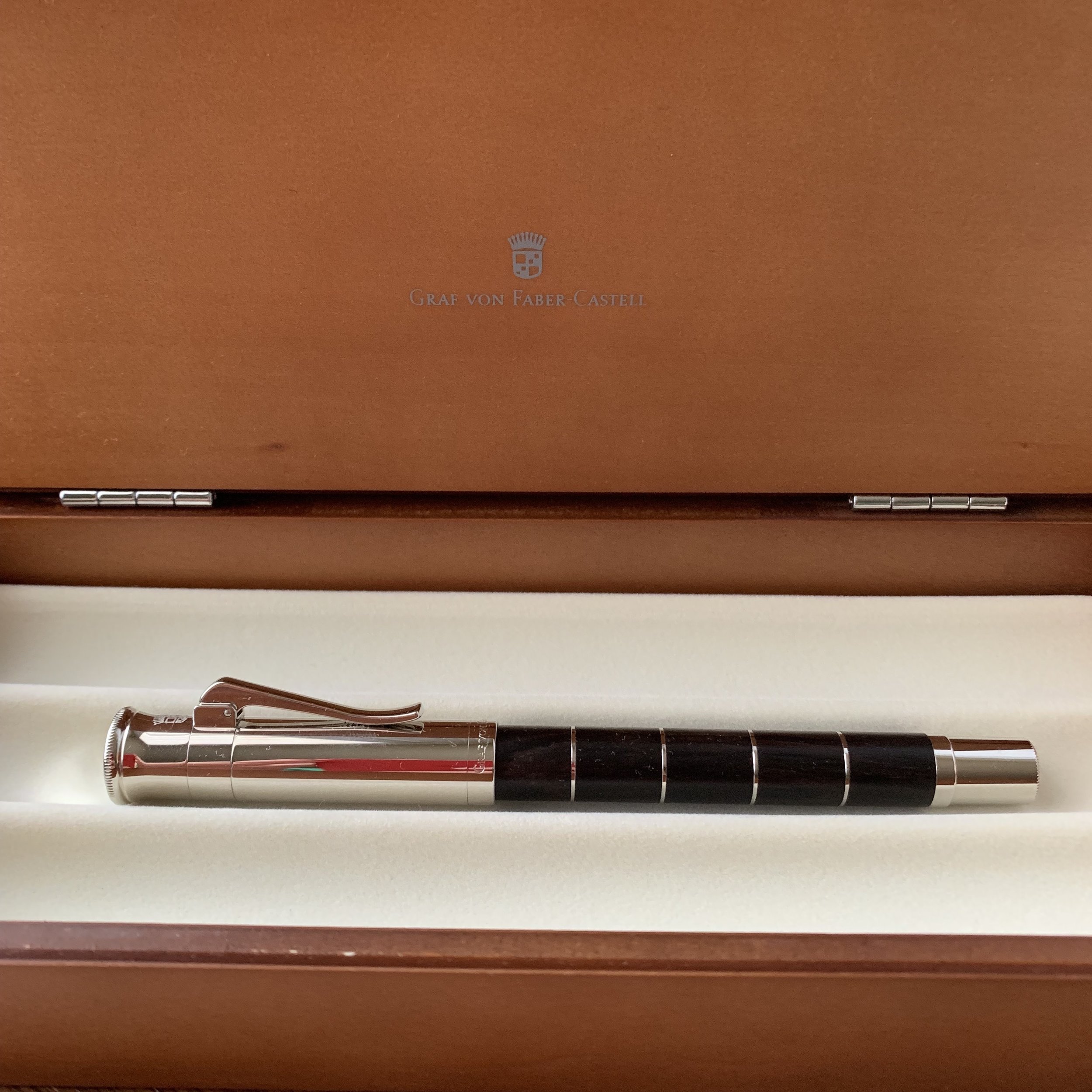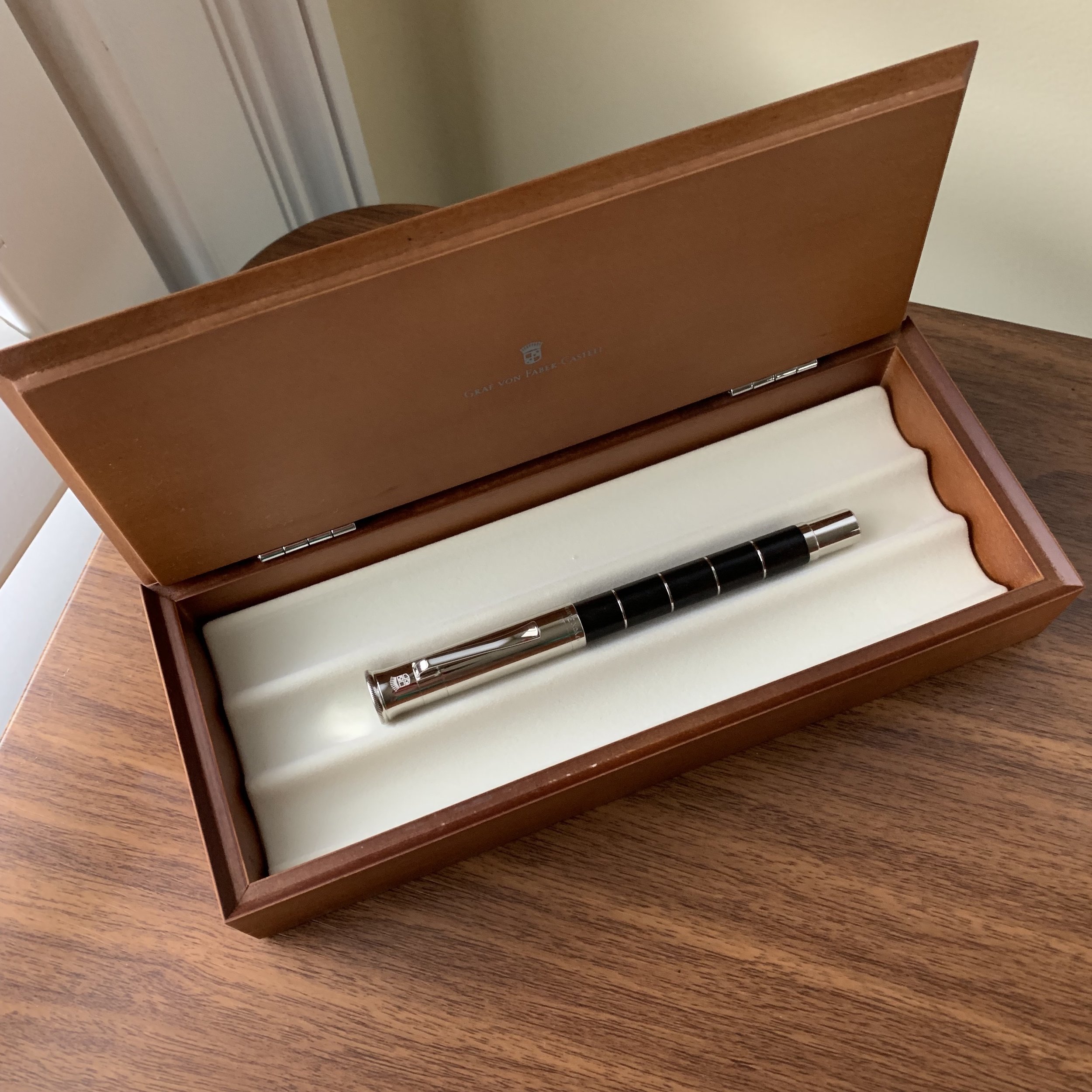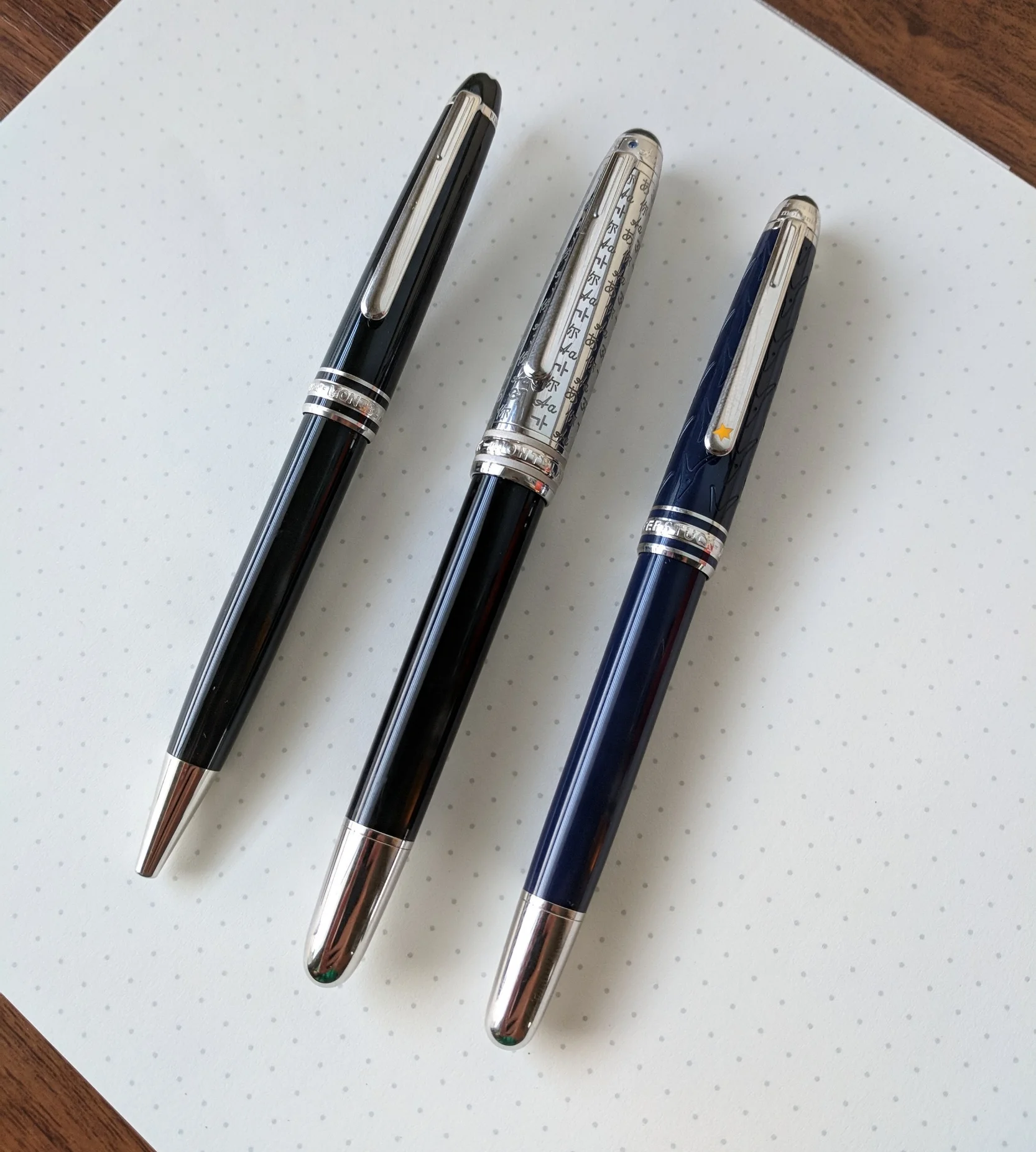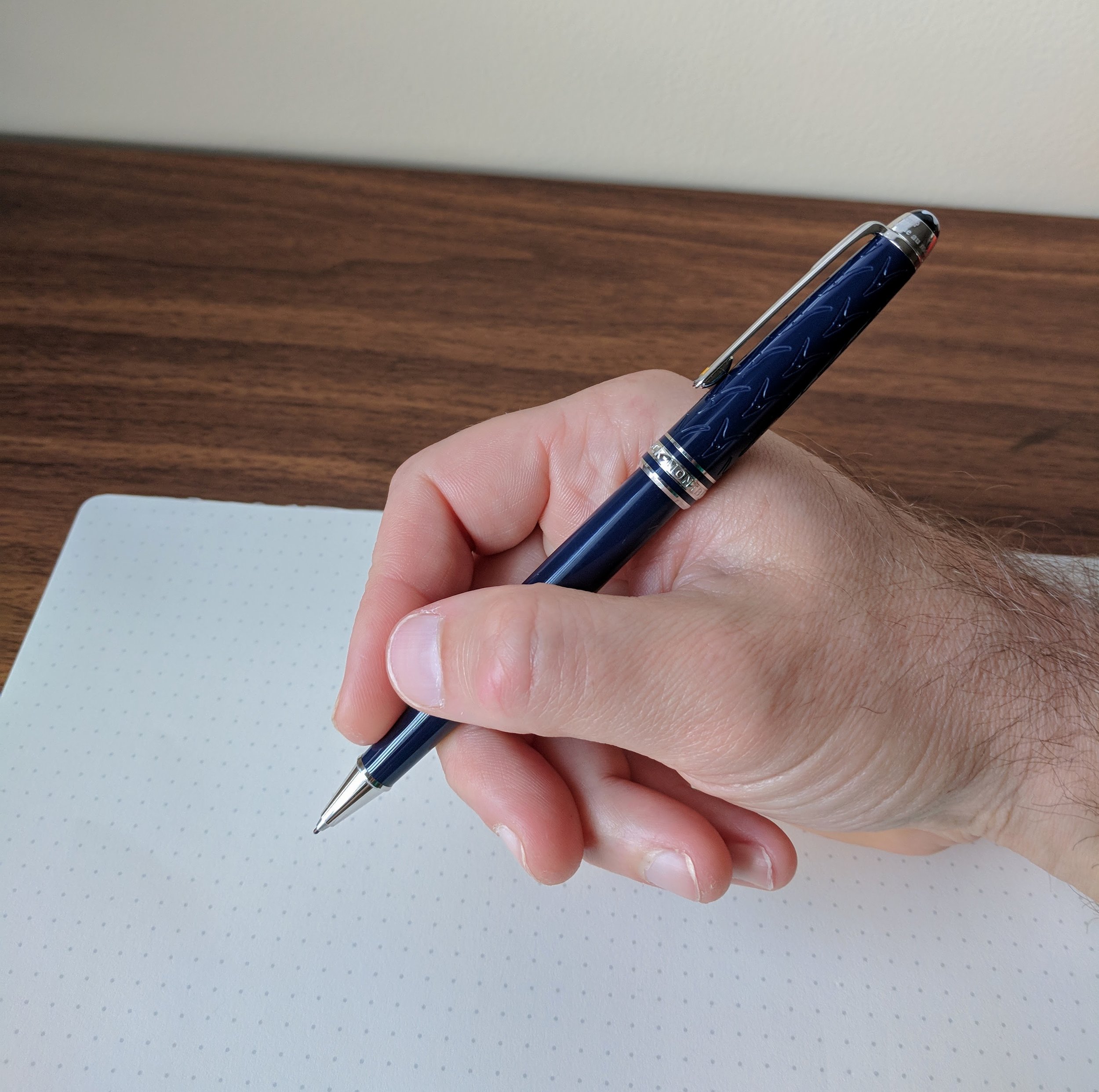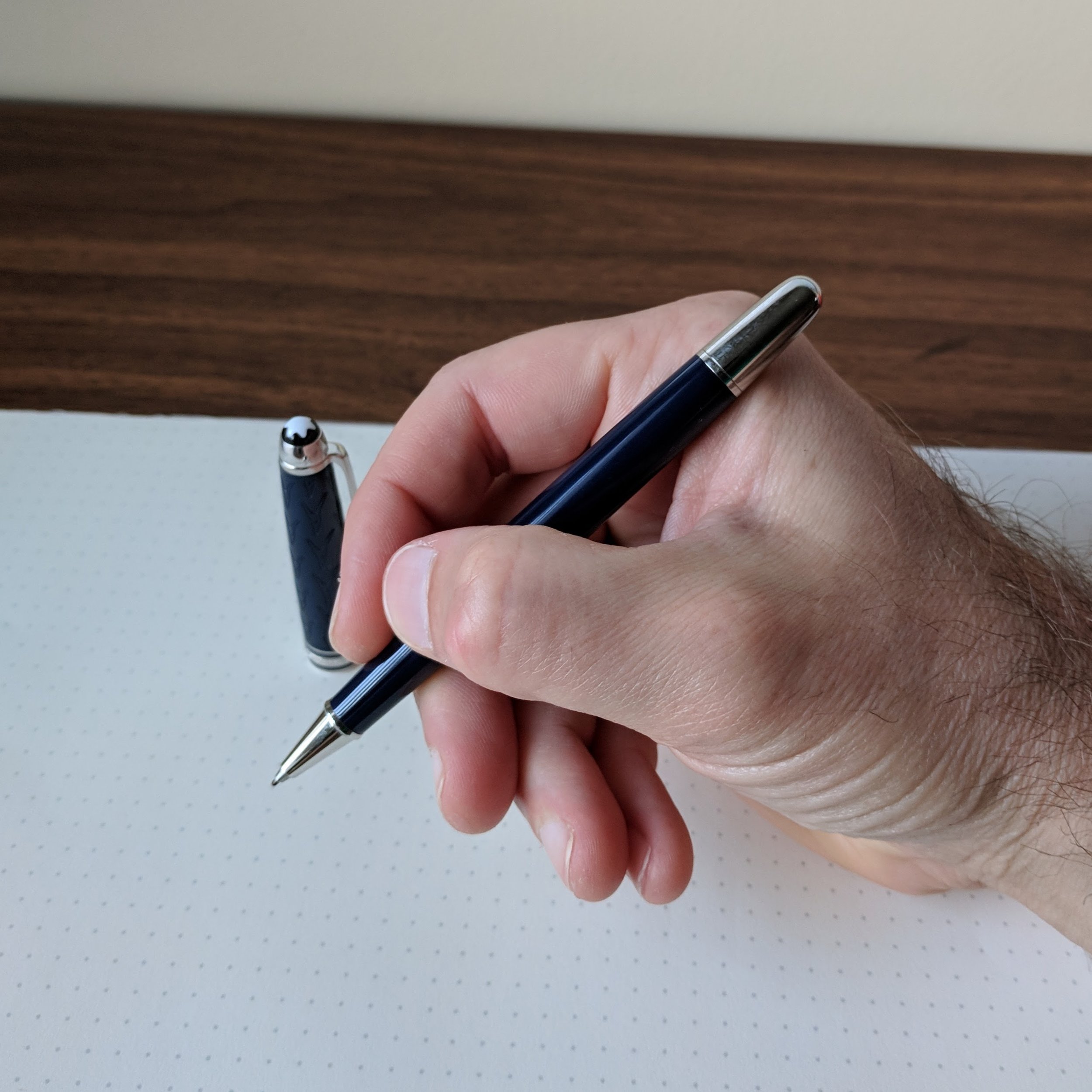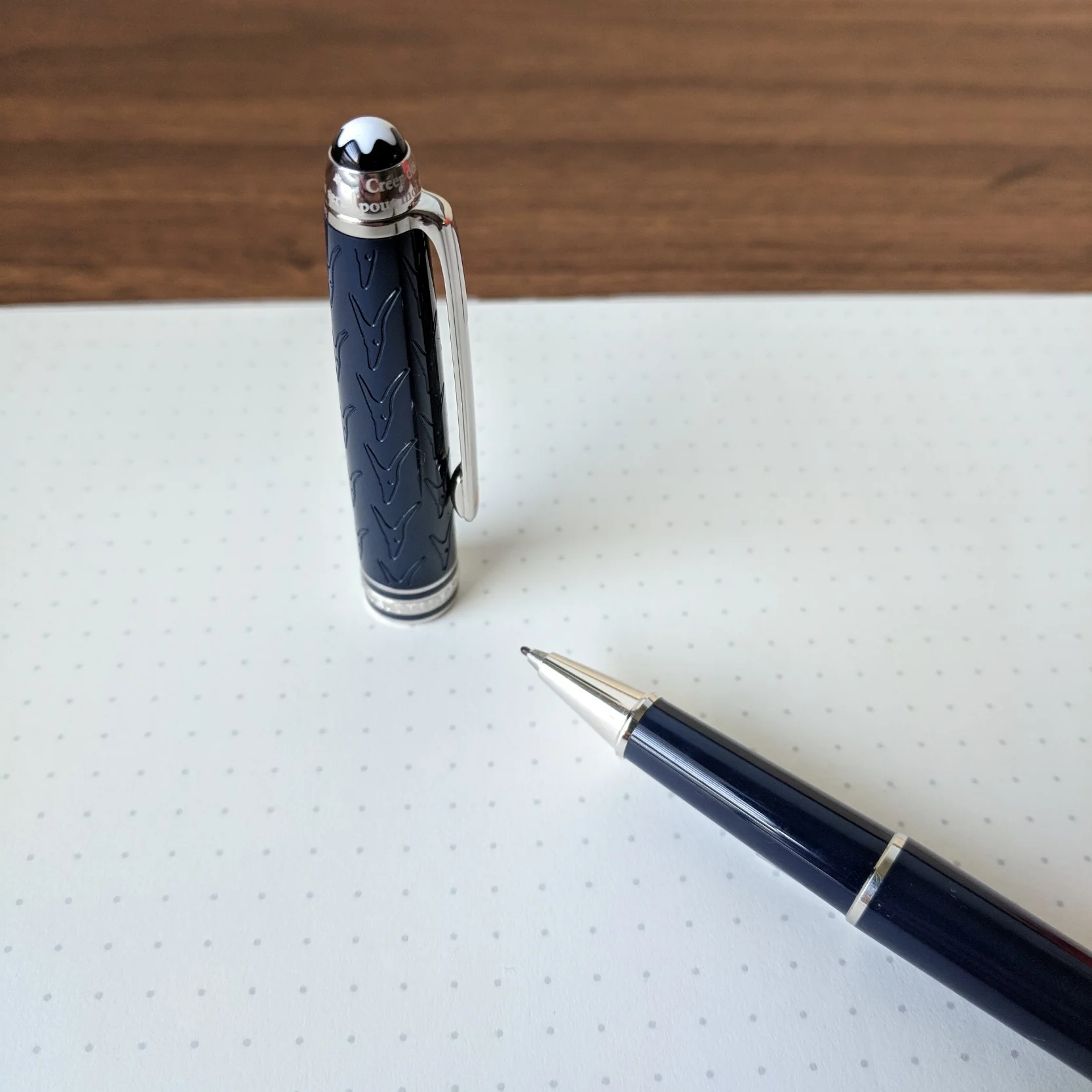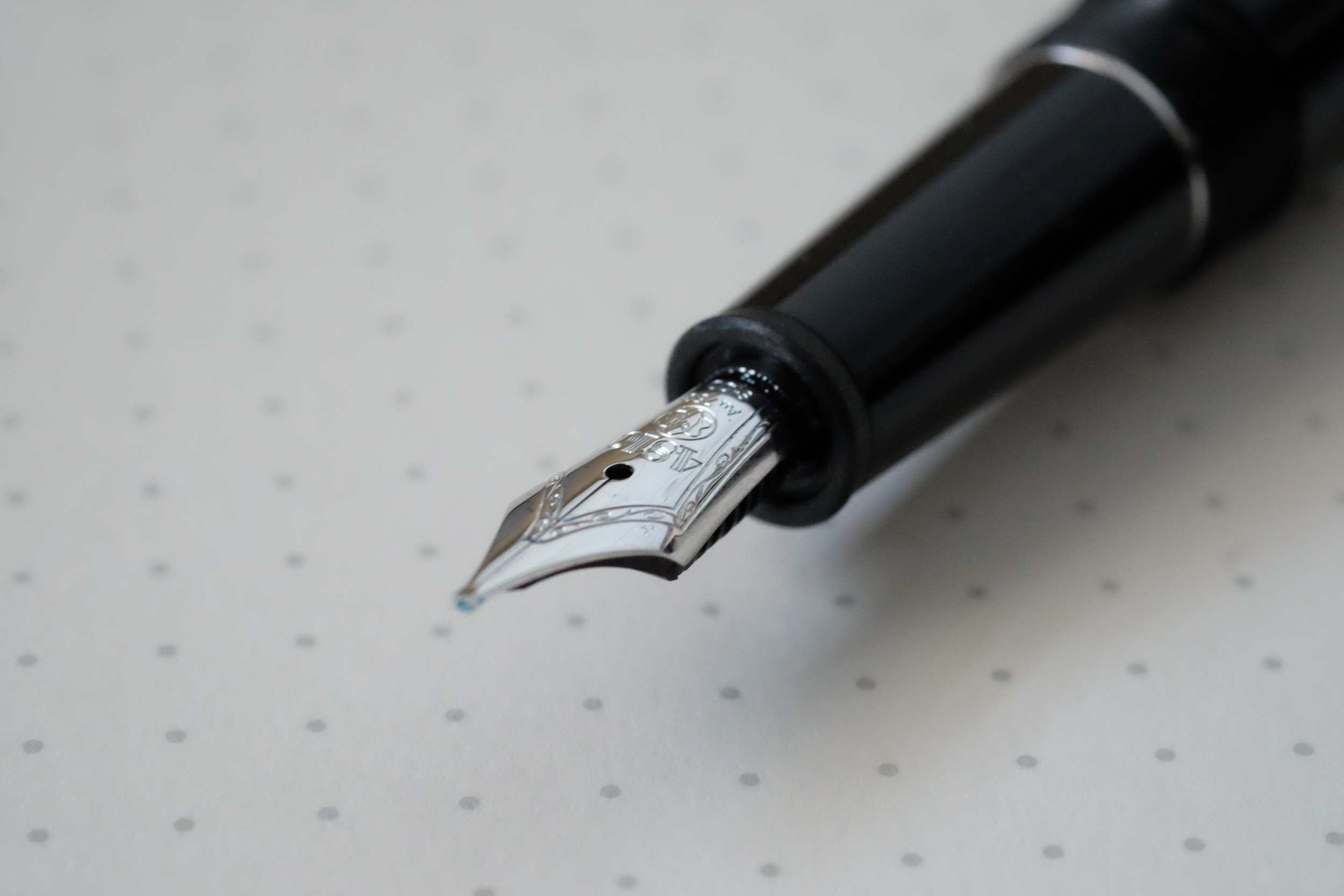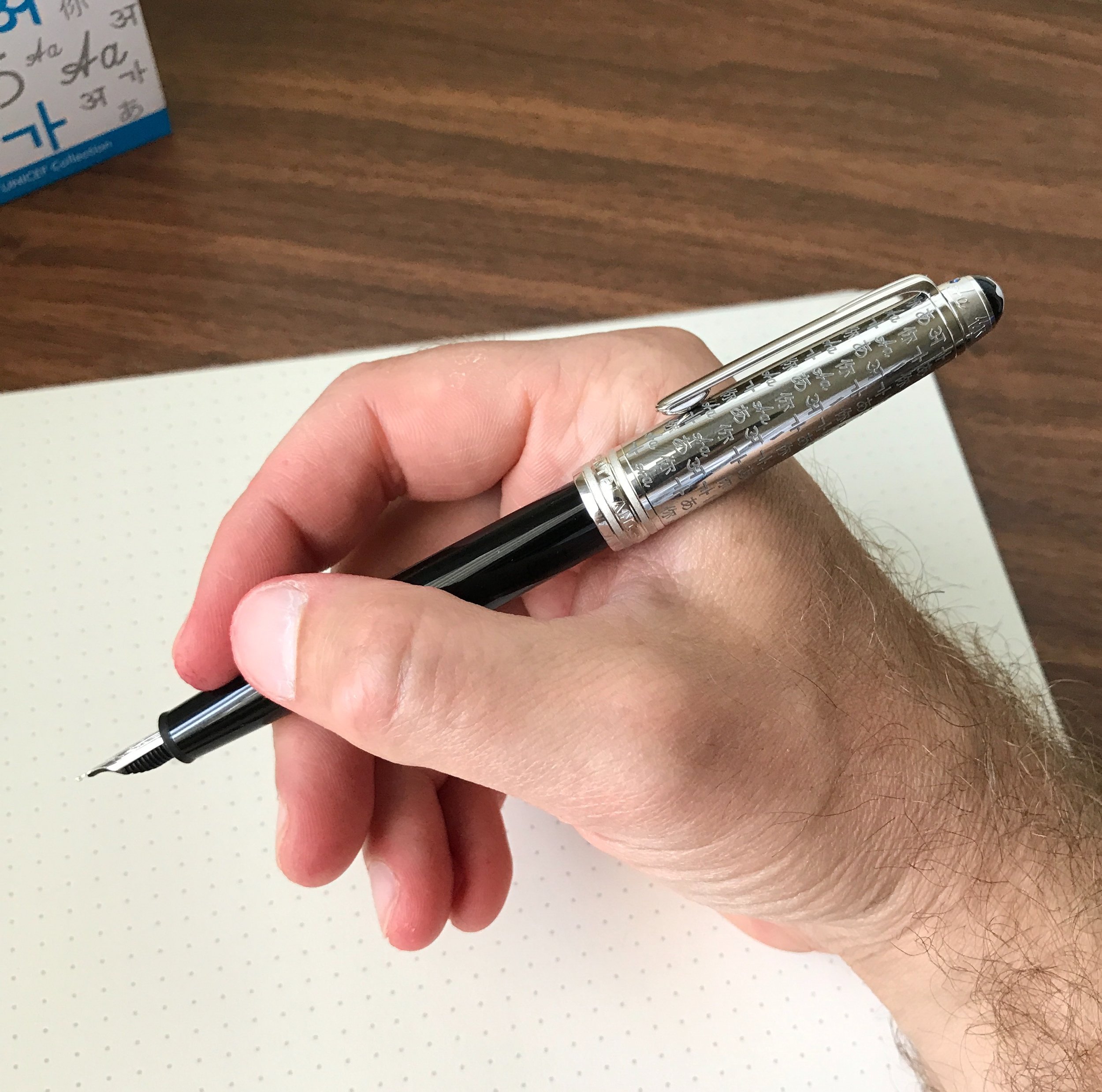Italian brand Leonardo Officina Italiana - referred to as “Leonardo” for short - has developed into one of the major success stories in the modern fine writing market. Founded after the collapse of Delta by designer and penmaker Salvatore Matrone (who previously worked for Delta), Leonardo has gradually expanded its lineup from the original Momento Zero to include the “Furore,” the newly announced “Messenger,” and the pen reviewed here, the “Momento Zero Grande.” I’ve chosen to review a limited edition version of the latter: the Momento Zero Grande Arlecchino (“Harlequin”) that was announced a few months back.
Leonardo’s packaging on the Arlecchino is reminiscent of OMAS, from the box liner to the faceted ink bottle. (The ink is excellent, by the way. Look for a separate review soon.)
The Problematic History of the Omas Arlecchino
This particular pen is inspired by the Omas limited edition “Arlecchino” fountain pen from the early 2000s, of which only 750 were made. While beautiful, the celluloid used to make these pens had a tendency to degrade over time, resulting in cracks and deterioration in the structure of the pen. Instead of attempting to work with the classic Arlecchino celluloid - if any even remains usable - Leonardo (or someone assisting in the production of these pens) developed an acrylic that closely resembled the original, with similar shades of green, black, and orange scattered throughout. I don’t know that it’s been clearly communicated that the material used to make the Leonardo Momento Zero Grande is NOT the same material used by Omas, given that I’ve received multiple comments from those concerned that this pen will disintegrate. The structural issues affecting celluloid generally do not affect acrylic resin (provided it is competently made), and this particular “Arlecchino” pen does not pose the same long-term durability issues.
The “Arlecchino” acrylic features darker orange, olive green, and black flecks within a lighter orange/peach base color.
Design and Build Quality of the Momento Zero Grande
Like the standard Momento Zero, the build quality on the larger version is exceptional. I understand that all Leonardo pens are hand-turned, and the pens reflect a high degree of expert craftsmanship in both the design and the finish. The appeal of any pen from a design standpoint is naturally subjective. Longtime readers of this blog know that I was a fan of Delta - at least their “subtler” designs - and the Momento Zero Grande falls squarely within that tradition.
Like many larger Delta Pens, the Momento Zero Grande features a piston/captured converter system that holds a lot of ink. To fill the pen, you don’t need to unscrew the section. The blind cap reveals the end of the converter - in effect the hidden “piston knob” - that fans of Delta pens either loved or hated.
The Arlecchino is far from a minimalist pen, and the material itself may come across as a bit loud to some, but it’s generally free from unnecessary adornments. Leonardo elected use a subtle zigzag engraving on the cap band and the ring just below the blind cap. The design, along with the Greek key pattern etched onto the captured converter, lends the pen an Art Deco vibe.
This is a high capacity converter which threads onto the section. I assume it can be removed for cleaning, but I’m not sure I would do it. I like that you can unscrew the section to check your ink level.
Nib and Overall Writing Experience
The Momento Zero Grande is a large pen. There’s no getting past that, and the size and weight will work for some but not others. After writing with this pen for a month, I actually think it’s at or near the limit of what I could consider comfortable - BUT I love it. Unposted, the balance is perfect for me, because the added weight from the captured converter system falls directly between my thumb and forefinger. Those with smaller hands will likely find the Momento Zero Grande too large and back-weighted. Larger hands shouldn’t have a problem, and may even be able to post this pen comfortably.
The standard Momento Zero Grande features a stainless steel No. 6 Bock nib, which is typically tuned quite well out of the factory but I sometimes find that I have to reset the nib to adjust ink flow. The Arlecchino limited edition featured here comes with a 14k gold nib on an ebonite feed, and writes quite well, like all the other Leonardo pens I own with this nib/feed combination. I opted for a fine nib here, and while I might characterize the line it writes as closer to an extra-fine, it has a steady inkflow with none of the Bock quality control issues that might give someone pause.
The color patterns in the Arlecchino material makes this a perfect pairing with green and red inks. Writing sample shown here with Montblanc Irish Green, which I reviewed this past week.
Takeaways and Where to Buy
Because Leonardo speaks to my vintage-inspired design aesthetic, this pen was a no-brainer purchase for me, and I snapped up No. 67/100 immediately. Fans of the Momento Zero probably shouldn’t hesitate to pick one up, especially since the “Grande” line features some of the more interesting materials Leonardo has used. In addition to the Arlecchino, Leonardo also released a series of “Art Deco” ebonite pens that I waited too long on, but I may try to grab one on the secondary market in the “Mustard” color. As noted above, my one word of caution on this pen is the sizing. If you’ve had trouble using larger pens in the past, you may want to hold a Momento Zero Grande in person before purchasing, or buy from a retailer with a flexible return policy in case the pen turns out to be too large and/or heavy.
I was surprised to see that the Momento Zero Grande was actually longer than the Montblanc 149, which I’ll be putting into rotation this month. Here, the Arlecchino is shown compared against, from left: (1) Standard Leonardo Momento Zero (in “Pietra Marina” Sea Stone Acrylic); (2) Montblanc 149; and (3) a Lamy 2000.
As Leonardo pens have grown in popularity, the Momento Zero and the Momento Zero Grande have become more widely available. I purchased the Arlecchino pen featured in this review from site sponsor Appelboom, which still has pens in stock, but only with gold trim. A few stores still appear to have both versions, including Casa della Stilografica and Novelli. The Arlecchino special edition is priced at around $480 at Appelboom, which I consider standard (or even on the lower side) for a larger handmade limited edition pen with a gold nib. If you’re interested in the standard Momento Zero Grande, my go-to sources for Leonardo Pens are Appelboom in Europe and The Nibsmith and Pen Chalet in the United States. The standard pen (with a steel nib) is priced anywhere from $260-300, and some retailers offer a gold nib for an upcharge.
Recommendations for Further Reading
Since it’s release, I’ve written several posts on the Leonardo Momento Zero and various limited and special editions. My original review can be found here, which includes pictures of the celluloid “Maestro Set” I acquired last year, and I wrote a follow up on the Leonardo x Pen Chalet special edition collaboration in which they released a Momento Zero reminiscent of the discontinued Delta Dolcevita. Finally, if you’d like a writing sample of Leonardo’s 14k stub nib, see Part II of my “Stock Stub Nibs” profile.
Disclaimer: I purchased the pen featured in this review with my own funds, for my own use, though I did use some store credit generated through the Appelboom affilate program, one of may ways I use to support the blog.



